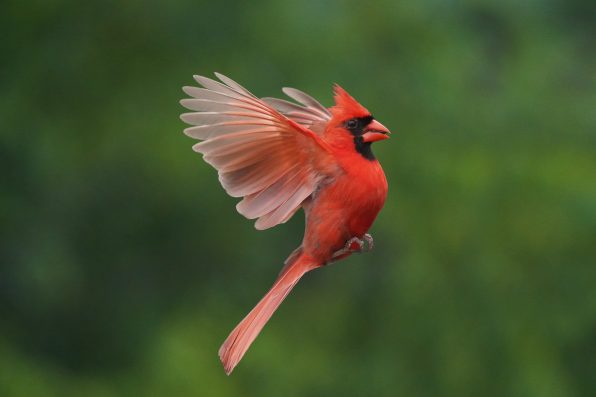These Are 15 Of The Most Fascinating Facts About Bird Feathers, Which Are Key For Flight, Insulation, And Even Communication

Birds, nature’s aerial acrobats, are obviously known for their incredible ability to soar through the skies. But have you ever paused to ponder what makes them so special?
Well, the answer lies in their remarkable plumage. Feathers are much more than just a bird’s outfit– they are engineering marvels that play a crucial role in flight, insulation, and even courtship.
So, here are 15 fascinating facts about these natural wonders.
1. The Exclusive Club Of Feathers
Unique in the animal kingdom, birds are actually the only creatures adorned with feathers. That’s why this exclusive feature really sets them apart.
Feathers, which originated from scales, have evolved over millions of years, transforming birds into the masters of the sky.
2. Incredible Range Of Feather Count
The number of feathers a bird sports can vary wildly. Tiny hummingbirds may have as few as 1,000 delicate feathers, while larger species like swans boast over 25,000.
This variation reflects the diverse lifestyles and habitats of birds, demonstrating nature’s adaptability.

Janet – stock.adobe.com – illustrative purposes only
3. The Weight Of Feathers Vs. Skeletons
It’s a surprising fact that for many birds, their feathers actually outweigh their skeletons.
This seemingly paradoxical situation highlights the lightness of avian bones and the density and complexity of their feather coats, balancing the need for sturdy flight with the necessity of minimal weight.
4. A Symphony Of Movement
Birds can maneuver individual feathers with precision, a skill essential for efficient flight, temperature regulation, and even communication.
Each feather is connected to a muscle, allowing birds to adjust their plumage for various needs, from aerodynamic changes during flight to puffing up for warmth or display.
5. Colorful Conversations
Feathers aren’t just about flight; they’re also a bird’s fashion statement! Vibrant colors, which can result from pigments or the way feathers refract light, play a key role in mating rituals and territorial displays.
The brilliance of a feather can indicate a bird’s health and vitality, making it a crucial factor in attracting mates.
6. Waterproof Wonders
Water birds also showcase another feather feat: waterproofing. By using oil from a gland near their tails, birds can preen their feathers to maintain waterproofing, ensuring that they stay buoyant and insulated even in wet conditions. This meticulous maintenance is vital for their survival.
7. The Molting Process
Birds don’t wear the same feathers year-round, either. Molting, the process of shedding and regrowing feathers, is actually a regular part of a bird’s life cycle.
This allows them to replace damaged feathers and, in some cases, to adopt a different plumage for breeding or seasonal camouflage.
8. The Sound Of Silence
Interestingly, owls have specialized feathers that allow for near-silent flight, an adaptation for nocturnal hunting.
The structure of these feathers minimizes air turbulence and muffles the sound, enabling owls to swoop down on prey undetected.
9. Insulation At its Best
Feathers serve as excellent insulators, helping to keep birds warm in cold conditions.
Down feathers, in particular, trap air in a way that retains heat, acting like a cozy, natural blanket.
10. The Science Of Flight Feathers
The primary flight feathers on a bird’s wings are masterpieces of aerodynamics. Their shape and structure enable lift and propulsion, allowing birds to maneuver gracefully and efficiently through the air.
11. Healing Properties Of Feathers
Some birds even have feathers containing antibacterial properties. These special feathers help keep the bird clean and free from harmful microorganisms, an essential aspect of avian health.
12. Feathers That Make Sounds
Certain birds also have feathers that produce sounds.
These specialized feathers can create a variety of noises used in communication, especially during mating rituals or as alarms to warn of predators.
13. The Role of Iridescence
Iridescence in feathers, caused by the microscopic structure of the feather’s surface, creates a shimmering spectrum of colors.
This dazzling display is used in mate attraction and species identification.
14. Feathers As Sensory Extensions
Feathers are not just passive structures; they can even act as sensory extensions.
Some birds use their feathers to detect changes in wind speed and direction, aiding in flight stability and maneuverability.
15. Feathers In Fossilization
Last but not least, feathers play an important role in the study of bird evolution.
Their presence in fossils has provided crucial insights into the origins and evolution of birds, bridging the gap between ancient dinosaurs and modern avian species.
Sign up for Chip Chick’s newsletter and get stories like this delivered to your inbox.
More About:Animals





